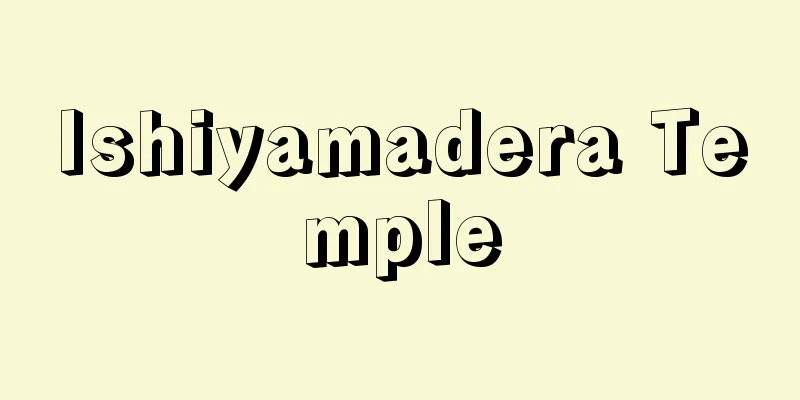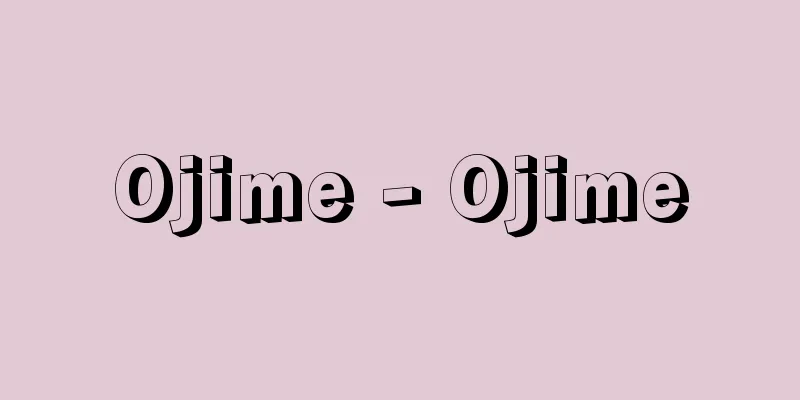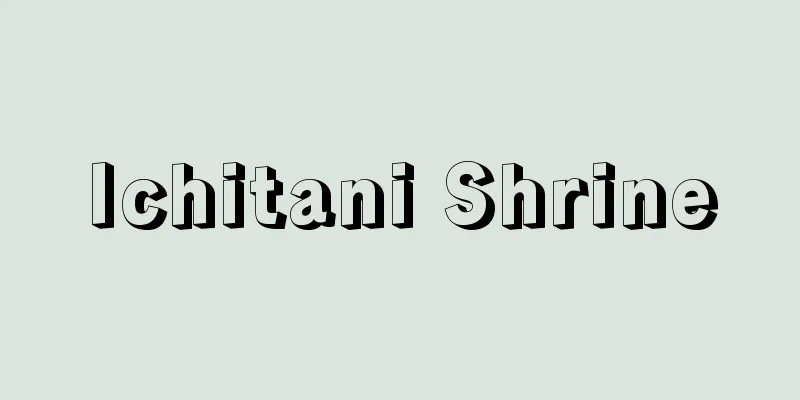Ishiyamadera Temple

|
Ishiyama-dera Temple, Otsu City, Shiga Prefecture, is a special head temple of the Toji school of Shingon Buddhism. It is called Sekkozan and is the 13th temple of the Thirty-Three Temples of the Western Provinces. It was founded by Roben in 749 (Tenpyo Shoho 1) at the request of Emperor Shomu. When gold was sought from various countries for the casting and decoration of the Great Buddha of Todaiji Temple, Roben, receiving the order, enshrined the Emperor's personal Buddha, Nyoirin Kannon statue, on a rock in Ishiyama, built a hermitage and prayed. Soon after, he was blessed with a miracle in the form of a gold offering from Mutsu Province, and established a temple here. Roben then carved a 16 shaku (about 4.8 meters) Kannon statue and enshrined the previous statue inside it as the principal image. Since then, as an imperial-prayer temple, it has attracted the faith of both the court and the public, and has seen a steady stream of pilgrims. Originally it belonged to Todaiji Temple (Kegon sect), but in the mid-Heian period it was converted to Esoteric Shingon Buddhism, and Kangen, Junyu and others lived there. In 1078 (Shoryaku 2), the temple complex burned down, but was partially rebuilt the following year in 1079. It is said that Minamoto no Yoritomo rebuilt it during the Kenkyu era (1190-1199) and donated a two-story pagoda. Furthermore, during the Kangen era (1243-1247), Eison rebuilt the temple and created the current principal image (a half-seated statue of Avalokitesvara Bodhisattva, a national important cultural property). The statue was kept secret and was traditionally opened to the public on the first day of each successive emperor's accession to the throne, but today it is only opened to the public once every 33 years. In 1604 (Keicho 9), it was repaired with donations from Toyotomi Hideyori and Lady Yodo. The main hall, facing south on the mountainside, has been added with an Ainoma (Ainoma) and a Kakezukuri (Raido) prayer hall, and the inner sanctuary retains the style of the late Heian period. The Tahoto (two-storied pagoda), a relic from the Kamakura period, is the oldest beautifully preserved structure in Japan and is a national treasure along with the main hall. In addition, the East Great Gate, the bell tower, and the Hokyointo (hokyointo) have been designated as Important Cultural Properties of Japan. The temple treasures include 10 national treasures such as the Chinese Tang Dynasty's "Gyokuhen" and ancient documents from the Heian period, as well as many other important cultural properties such as a standing statue of Kannon Bodhisattva, a statue of Shaka Nyorai, a statue of Vimalakirti, a statue of Acala, a seated statue of Jun'yu Naigu, and the "Ishiyama-dera Engi Emaki," "Tale of Genji Emaki," and "Ishiyama-dera Issaikyo." Next to the main hall is the "Genji no Ma" where Murasaki Shikibu is said to have written "The Tale of Genji," and the temple has deep ties to literature, as it often appears in works such as "The Diary of a Dragonfly," "The Pillow Book," "The Diary of Izumi Shikibu," and "The Diary of Sarashina," and is also featured in poems. The temple grounds are a scenic spot overlooking the Seta River, and have been famous since ancient times as the "Autumn Moon of Ishiyama," and are counted among the Eight Views of Omi. Events include the Ishiyama Festival (May 1st), the Aooni Hotaru Festival (mid-June), the Ishiyama Kannon Sennichie (August 9th), and the Meigetsu Murasaki Shikibu Festival (the day of the harvest moon). [Kanaoka Hidetomo] "Pilgrimage to Ancient Temples: Omi 2: Ishiyama-dera Temple" edited by Yasushi Inoue and Yoshitaka Tsukamoto (1980, Tankosha) Main hall (national treasure). Otsu City, Shiga Prefecture © Ishiyama-dera Temple "> Ishiyama Temple Nationally designated important cultural property Otsu City, Shiga Prefecture © Lake Biwa Visitors Bureau Public Interest Incorporated Association "> Ishiyama-dera Temple East Gate Source: Shogakukan Encyclopedia Nipponica About Encyclopedia Nipponica Information | Legend |
|
滋賀県大津市石山寺にある真言宗東寺(とうじ)派の別格本山。石光山(せっこうざん)と号する。西国(さいごく)三十三所第13番札所。749年(天平勝宝1)、聖武(しょうむ)天皇の勅願により、良弁(ろうべん)が開創。東大寺大仏の鋳造、荘厳(しょうごん)のため諸国に黄金を求めたとき、勅を受けた良弁が、石山の地の岩上に天皇御持仏の如意輪観音(にょいりんかんのん)像を安置、草庵(そうあん)を結んで祈願したところ、まもなく陸奥(むつ)国からの黄金献上という奇瑞(きずい)を得て、この地に寺を開いた。そして良弁は1丈6尺(約4.8メートル)の観音像をつくり、その中に先の像を納めて本尊としたと伝えられ、以来勅願寺として朝野の信を集め、参詣(さんけい)者が相次いだ。初め東大寺(華厳(けごん)宗)に属していたが、平安中期に真言密教に改められ、観賢(かんげん)、淳祐(じゅんゆう)らが住した。1078年(承暦2)伽藍(がらん)を焼失したが、翌1079年一部を再興。建久(けんきゅう)年間(1190~1199)に源頼朝(よりとも)が再建し、多宝塔を寄進したという。さらに寛元(かんげん)年間(1243~1247)に叡尊(えいそん)が再興、現存の本尊(如意輪観世音半跏像(かんぜおんはんかぞう)。国の重要文化財)をつくった。像は秘仏となっており、歴代天皇の即位の初歴に開扉する定めであるが、今日では33年に一度開帳される。1604年(慶長9)豊臣秀頼(とよとみひでより)と淀君(よどぎみ)の寄進により修造が行われた。 山腹に南面した本堂は相の間(あいのま)と懸造(かけづくり)の礼堂(らいどう)が付加されており、内陣に平安後期の遺風を残している。多宝塔は鎌倉時代の遺構で、わが国最古の整美を誇り、本堂とともに国宝である。また東大門、鐘楼、宝篋印塔(ほうきょういんとう)が国の重要文化財に指定されている。寺宝には、中国唐代の『玉篇(ぎょくへん)』や平安時代の古文書(こもんじょ)など国宝10点のほか、観世音菩薩(ぼさつ)立像、釈迦如来(しゃかにょらい)像、維摩居士(ゆいまこじ)像、厄除不動明王(やくよけふどうみょうおう)像、淳祐内供坐像(ないくざぞう)、『石山寺縁起絵巻』『源氏物語絵巻』『石山寺一切経』など国の重要文化財も多い。本堂の傍らには紫式部が『源氏物語』を執筆したといわれる「源氏の間」があり、『蜻蛉(かげろう)日記』『枕草子(まくらのそうし)』『和泉式部(いずみしきぶ)日記』『更級(さらしな)日記』などにも当寺がしばしば登場し、また歌に詠まれるなど、文学とのゆかりも深い。 寺域は瀬田川に臨む景勝の地で、古来「石山の秋月」として名高く、近江(おうみ)八景の一に数えられる。行事には石山祭(5月1日)、青鬼ほたる祭(6月中旬)、石山観音千日会(8月9日)、名月紫式部祭(中秋名月の日)などがある。 [金岡秀友] 『井上靖・塚本善隆監修『古寺巡礼 近江 2 石山寺』(1980・淡交社)』 本堂(国宝)。滋賀県大津市©石山寺"> 石山寺 国指定重要文化財 滋賀県大津市©公益社団法人びわこビジターズビューロー"> 石山寺東大門 出典 小学館 日本大百科全書(ニッポニカ)日本大百科全書(ニッポニカ)について 情報 | 凡例 |
<<: The origins of Ishiyama-dera Temple
Recommend
Shrimp scent - Shrimp scent
...Incense was also burned indoors, known as sora...
Gum turpentine - Gum turpentine
…Most of them are monoterpenes, but pinenes are t...
South China
The name of a region in southern China. It includ...
《Reorganisation de la société européenne》 (English notation) Reorganisation de la sociétee europeenne
…Utopian Socialist Positivism [Mori Hiroshi]. … *...
Osaka Plain
A plain that stretches from Osaka Prefecture to t...
tables de mortalité (English spelling) tables demoralite
...The life expectancy of people living in a coun...
Mixed farming - kongou nougyo
A form of agricultural management in which crop c...
Lottery (Kuji) - Lottery
A form of divination that is extremely widespread ...
Italian Corn Salad - Italian corn salad
... There are about 80 known species of the genus...
Terhune, AP (English spelling) TerhuneAP
... In the 20th century, American children's ...
The Pre-Jomon Ainu Theory
… [Jomon people] Tsuboi Shogoro claims that the K...
Calcined coke
…The volatile matter can be removed by heating th...
Kron, G. (English spelling) KronG
... Although there are some records of performanc...
Arahabakigami - Arahabakigami
...In the case of guest gods, unlike the above tw...
Rabbit Fern - Rabbit Fern
...The sporangia are circular and located near th...









